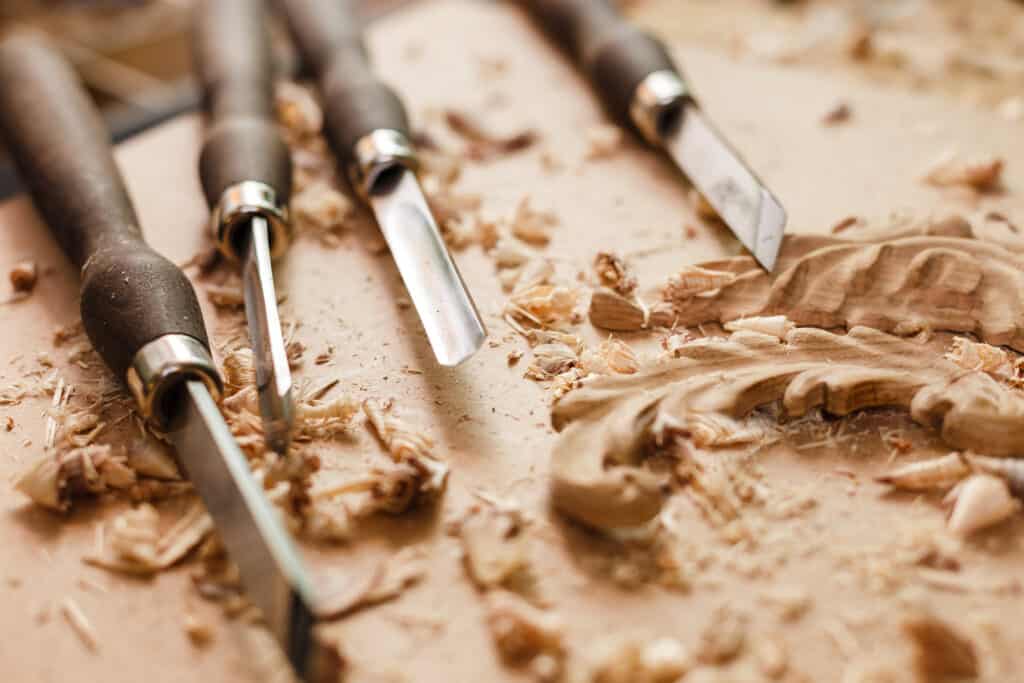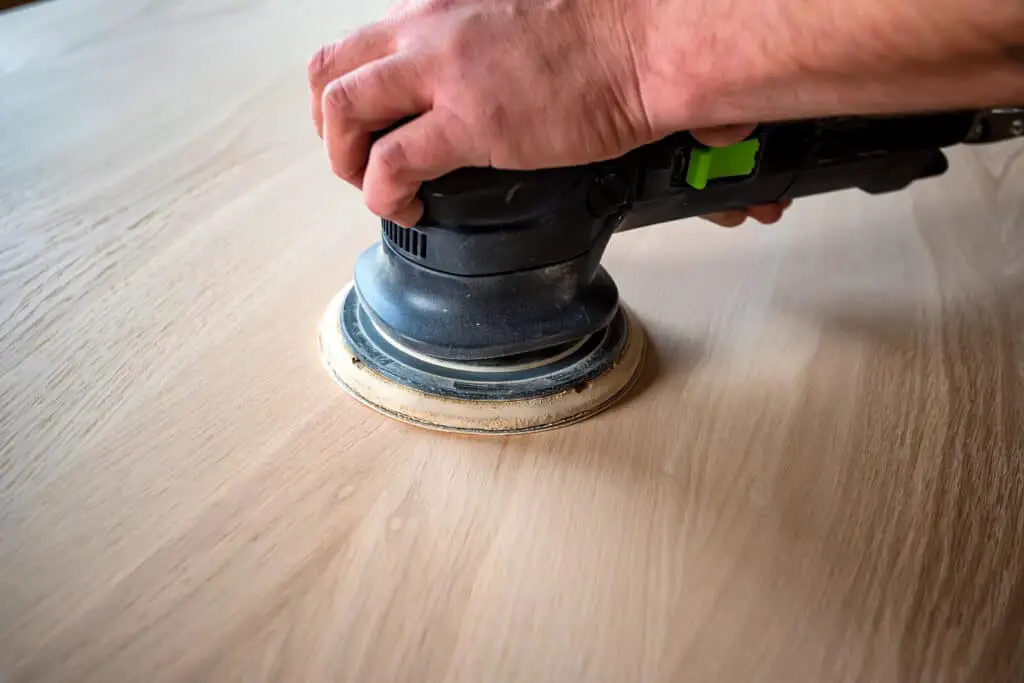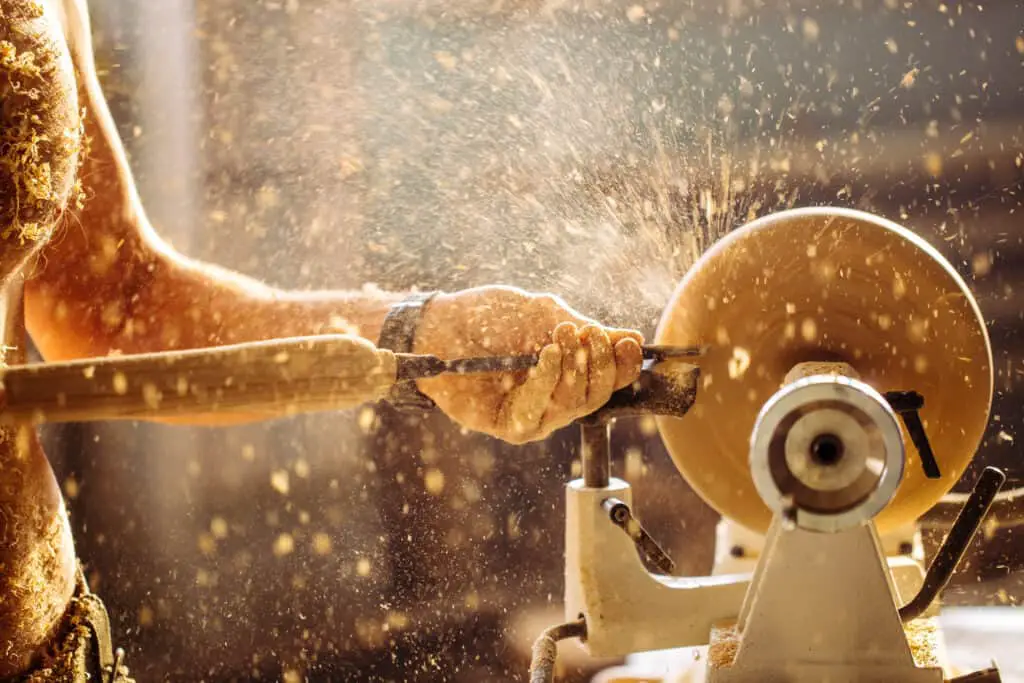When it comes to woodworking, there is a multitude of wood varieties to choose from. One might consider using cottonwood for woodworking projects due to its affordability, its light weight, and its ease to work with.
Cottonwood is a good option for woodworking when it comes to carving, making baskets, creating pulp for papers, toy-making, and oriented strand board (OSB). There are trade-offs when utilizing this type of wood, but it is great for those who are looking to save some money when practicing carpentry.
With the number of uses for cottonwood, it’s important to understand how to properly utilize this wood and how the different species are used in woodworking.
You would be surprised how often this question comes up. We are very lucky to have a couple Master Woodworkers in our workshops who have used every type of wood imaginable on Cucamonga Woodworking. You can watch our past workshops on YouTube here(Link to Cucamonga Woodworking)
Details and Specifications of Cottonwood
Cottonwood is known to be a fast-growing tree, averaging five to six feet per year in their first twenty-five years of life. Due to their quick growing time, cottonwood has a history of being used from the times of the indigenous people of America, through the early pioneers, and to modern times (Source).
This tree was also a signal of nearby water since cottonwood’s ideal soil is along rivers and other bodies of water. With the abundance of water and well-drained soil, the cottonwoods would spring into life. They are also known to grow anywhere from seventy to one hundred feet tall and can live upwards of one hundred years if grown in the right type of soil. This is what makes the cottonwood so dependable to work with.
Unfortunately, due to their quick growing time and high moisture content, this can cause the trees to tend to lean, which can cause a number of problems when woodworking, such as warping easily when dried.
Although this can be a source of frustration during any carpentry project, there are also many advantages when working with cottonwood lumber. It is considered to be a hardwood tree since it is a true poplar, but it is known to be lightweight and softer in comparison to other hardwoods. This makes cottonwood an ideal candidate for carving and creating children’s toys.
However, it’s important to keep in mind that the different species of cottonwood work better for different projects. There are twenty-five different species of cottonwood around the world, but the most commonly used varieties for commercial use are the Eastern Cottonwood and the Black Cottonwood.

Black Cottonwoods work well for timber production and interior panels, while Eastern Cottonwood can be used for interior furniture, pulp for paper, baskets, OSB, and pallet boxes. Both wood varieties can also be used to whittle out carvings or kitchen tools, such as spoons or decorative appliques.
In the woodworking community, this type of wood is known to be junk wood since it isn’t able to handle much resistance, is weak when bent, and is not moisture resistant. This is why the wood is often utilized for more decorations, carving, boxes, and baskets.
Cottonwood is also popular for boxes and baskets due to its odorless, colorless, and tasteless lumber. This is why this type of wood is ideal for transporting goods such as fruits and vegetables.
Woodworking with Cottonwood
When it comes to woodworking, it is crucial to pick out the right board for the project. Since cottonwood grows so quickly, it’s crucial to keep an eye out for damp spots on the boards of lumber, especially if they are more than an inch thick. It’s also important to check for decay or fungal infections, as cottonwoods are prone to such infestations.
If you are going to use this type of wood for a project, it’s important to understand cottonwood’s pros and cons.
| Advantages | Disadvantages |
|---|---|
| Lightweight | Prone to decay |
| Easy to paint | Not moisture resistant |
| Holds in nails well | Porous |
| Affordable | Creates fuzz |
According to the table above, there are certain trade-offs to be aware of when using cottonwood in any project. Many beginning woodworkers might look past cottonwood due to its disadvantages, but cottonwood should be considered more often for woodworking projects. If you are a beginner, consider speaking with a more seasoned carpenter to understand how to best work with cottonwood.
This is also a great wood variety to be working with, especially because of how affordable it is. It may depend on the market prices of lumber, but cottonwood can cost about one dollar per board foot.
If using cottonwood specifically for carving, look for carving blocks or pieces that are not too porous, otherwise it can distort or make carvings more difficult to whittle.
When using hand or power tools on cottonwood trees, be sure to use extremely sharp instruments at high speeds since the lumber is known to be soft. With a blade, it is better to use one with 24 teeth due to the wood’s density. If using too dull of a blade, it may cause the cottonwood to fuzz.
When using hand or power tools, it’s important to understand that using this type of machinery can create what is referred to as “fuzz.” This is inevitable when working with cottonwood, especially when putting a finish on the lumber, due to the thin, hair-like fibers in the wood.
Sanding Cottonwood

Since Cottonwood lumber and carving blocks are notorious for producing cotton or “fuzz” in carpentry, it’s helpful to know how to avoid this from happening.
According to woodworkly.com, the best way to sand cottonwood is by using 100, 150, and then 220 grit sandpaper in between coats of Salad Bowl Finish, or whatever finish you may choose to use. Depending on what kind of project is being done, it is also appropriate to utilize 320 grit.
Using clear finishes is a great way to cause the “fuzz” to stay at a minimum, all while showing off the natural beauty of the wood. Polyurethane can also be used in between sanding cottonwood while brushing away the fuzz. Luckily, cottonwood is known to dry quickly, which gives woodworkers faster working time with this type of wood. Adding polyurethane also causes the wood to become harder, therefore more sturdy for interior furniture.

